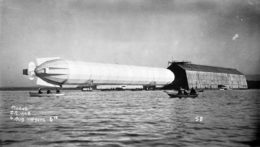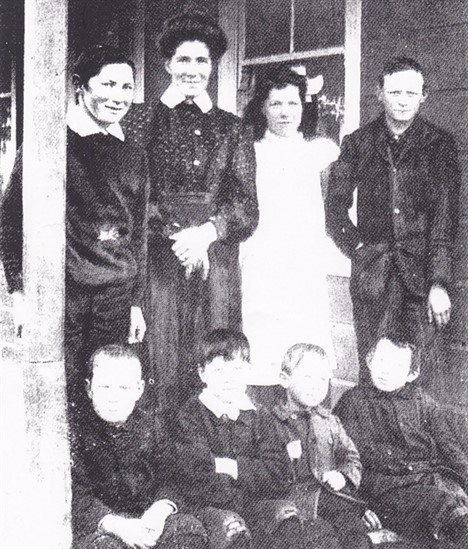by Charles Lear
 A lot of people are familiar with the mysterious airship wave over the United States that began in 1896. Beginning in California and continuing throughout the rest of the country, people reported seeing large ships in the sky, often described as cigar-shaped and with bright lights when seen at night. There were reports of landings and meetings with human-looking occupants and most thought they were seeing the results of some great inventor’s work. The sightings were reported in many newspapers of the day and they remain an intriguing part of American history. What many people are not aware of is that, in 1909, New Zealand experienced a similar wave of sightings.
A lot of people are familiar with the mysterious airship wave over the United States that began in 1896. Beginning in California and continuing throughout the rest of the country, people reported seeing large ships in the sky, often described as cigar-shaped and with bright lights when seen at night. There were reports of landings and meetings with human-looking occupants and most thought they were seeing the results of some great inventor’s work. The sightings were reported in many newspapers of the day and they remain an intriguing part of American history. What many people are not aware of is that, in 1909, New Zealand experienced a similar wave of sightings.
As with the American sightings, the New Zealand sightings are preserved in newspaper articles and these are an excellent means of establishing a timeline. New Zealand took a special interest in creating a national archive to preserve its newspapers and there is a wealth of material available to researchers at paperspast.natlib.govt.nz. A 2015 article written by Bryan Dickeson that appears on the UFO Focus New Zealand Research Network website, goes into detail about the news coverage. He noted how researchers have consistently favored the coverage by northern island sources and that this has resulted in the loss of important details as the first sightings occurred on the south island. The very first sighting was reported in the July 13, 1909 edition of the Clutha Free Press, but Dickeson described being unable to find the original article after a 25-year search. Fortunately, enough of the article was reprinted in other papers, that he was able to reconstruct it.
The article begins with a statement regarding the witness’ credibility:
“A resident of Stirling whose veracity we have always been accustomed to look upon as absolutely unimpeachable called upon us yesterday with the story of a strange light seen in the sky over the Wangaloa Hills on Sunday night.”
The witness described the light as “a white light with a reflector” and that it changed altitude and direction seeming to move “with as much ease, and even grace, as a bird on the wing.” He stated that he and others with him, thought they could make out an opaque outline and he came to the conclusion that they had witnessed an airship making an experimental flight.

The witness was revealed to have been a Mr. John Boyd in the July 29th edition of the Milton, NZ paper the Bruce Herald. An article in the Clutha Leader describing the wedding of Boyd to Hilda Turner, indicates he was a respected citizen from a respected family.
Other sightings and more articles followed but the coverage remained local at first. A nationally circulated paper, the Otaga Daily Times reprinted part of the Clutha Free Press article on July 16th and even though the material was circulated via the United Press Association wire service, there was little interest among other news organizations. The Times continued their coverage throughout the wave and is an excellent source for researchers.
Many papers reported with a skeptical, less than serious tone. The July 27, 1909 Clutha Leader described one witness who, having seen a light, concluded that he’d seen a “fire balloon” set aloft as “an ‘airship’ joke.” The same article mocks witnesses in Clinton saying they “went one better and declared they not only saw the mysterious object but averred they heard the occupants talking.” At one point, a Mr. George Smith, talking about sightings by people on a beach over the course of a week, was quoted as saying, “If it appears again within range, some of the beach boys are going to try to ‘prick the bubble’ with a bullet.”





It was a series of sightings over the town of Kelso that brought the phenomenon to national attention. An article in the July 29, 1909 Otego Daily Times, reads very much like a modern UFO report and the reporter interviewed 10 individual witnesses and two families. The first witnesses were five children and one adult who had a daylight sighting over a school. The reporter interviewed all witnesses separately and had them draw sketches of what they’d seen. The drawings made by the children were all similar and resembled Zeppelins, each with a carriage underneath and a propeller in the back. The adult was a woman who was profoundly shaken by what she’d seen and her drawing resembled a ship without a mast. The movement they described was very much like that of a Zeppelin but all reported that there was no noise. The other witnesses described seeing a light moving in the night sky and one, a boy, claimed to have seen the dark outline of a ship as well. Finally, one witness claimed to have heard a “dull rolling whirring noise” from overhead while lying in bed and two families living along the path followed by the noise claimed to have been woken up though they didn’t actually hear the noise.
By July 26th, the wave had reached the north island with lights being reported in Aukland. A Waipawa man reported to the Hawkes Bay Herald that on the night of August 3rd, he’d seen a grey, torpedo-shaped craft with lights on both ends. He described three occupants and said that one of them shouted at him “in an unknown tongue.” The news coverage by then had become quite skeptical and many prosaic explanations were offered. The Kelso sightings were said to have been misidentified black swans and others were attributed to Mars, stars, kites and fire balloons. Other than the swans, the explanations, particularly the fire balloons, seem plausible for many of the sightings. A fire balloon is a paper bag with a candle suspended underneath and people did come forward claiming they’d sent them up as hoaxes. Papers also noted an increase in fire balloon sales during the wave.
By September, the New Zealand reports stopped but people began seeing things in Australia and the surrounding area. Meanwhile, there was a wave in England with reports from May, 1909 up to the start of World War I. Some of these were recounted by author Charles Fort in his 1931 book, “Lo!”
What separates the 1909 New Zealand wave from the earlier American one is the fact that by 1909, an actual airship existed. This was the Zeppelin, invented by the German count, Ferdinand von Zeppelin and successfully flown in 1900. In 1909 Zeppelin founded the very first airline but, by August of that year, only pleasure cruises were available and the idea of a flight to New Zealand was out of the question. To get past the problem of a long distance flight, some New Zealanders thought a Zeppelin might have been launched to spy on the country from the deck of passing German ship.
On July 29th, the Clutha Leader published a letter by a surveyor from Balclutha, Robert Grigor, in which he speculated that New Zealanders were being visited by advanced beings from another world. This is the earliest extraterrestrial hypothesis associated with aerial phenomena to show up in a newspaper that this writer knows of. One has to wonder whether extraterrestrial visitors might have been a more comforting thought to New Zealanders than spying Germans.